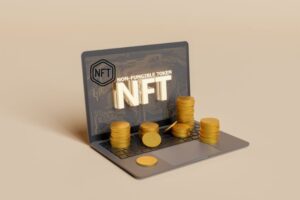
With Web 3.0 emerging, the internet is undergoing a massive transformation, especially in the way content is created, shared, and owned. Web 3.0 aims to make the internet more decentralized and user-driven, shifting control from large platforms back to individual creators. This shift has significant implications for content creation, allowing creators to control their work more fully and interact directly with their audiences.
What Is Web 3.0?
Web 3.0, or the decentralized web, represents the next phase of the internet. Unlike Web 2.0, which relies on centralized platforms like Google, Facebook, and Amazon, Web 3.0 aims to decentralize the internet using blockchain technology and decentralized networks. By removing intermediaries, Web 3.0 promotes direct interactions, giving users and creators greater control over their data and digital assets.
Increased Ownership and Control for Creators
One of the most significant ways Web 3.0 changes content creation is by giving creators ownership of their content. On Web 2.0 platforms, creators often give up some control over their work once it’s shared on social media or other content-sharing platforms. With Web 3.0, blockchain technology and smart contracts allow creators to truly own their digital assets, protecting their content from being used or copied without permission.
NFTs and Content Ownership

Non-fungible tokens (NFTs) play a crucial role in Web 3.0 by enabling ownership of digital assets. NFTs allow creators to “mint” their content on the blockchain, proving ownership and enabling exclusive rights. For example, a digital artist can mint an NFT for a piece of artwork, giving them control over who can buy, sell, or display it. This makes content more secure and lets creators monetize their work in new ways.
Direct Monetization Without Intermediaries
Web 3.0 opens up opportunities for direct monetization, allowing creators to earn revenue without sharing profits with intermediaries. In the Web 2.0 model, platforms like YouTube or Spotify control advertising and monetization, often taking a large percentage of the earnings. With Web 3.0, creators can earn directly through decentralized platforms or smart contracts, which automatically handle payments and royalties.
Token-Based Communities
Another exciting feature of Web 3.0 is token-based communities, where creators and fans interact using cryptocurrency tokens. Fans can purchase or earn tokens to access exclusive content, vote on future content ideas, or even participate in revenue-sharing. This approach allows creators to build stronger, more engaged communities while giving fans a sense of ownership and participation in the creative process.
Better Protection Against Censorship
Web 3.0 also enhances content freedom by reducing the risk of censorship. On traditional platforms, content is often subject to moderation based on centralized guidelines, and creators may face restrictions or removals without recourse. With Web 3.0, content can be stored on decentralized networks, making it more resilient to censorship. Decentralized storage means that no single entity has control, protecting creators’ rights to express themselves freely.
Enhanced Transparency and Security
Transparency is another benefit that Web 3.0 brings to content creation. Blockchain technology makes it easier to verify the source and authenticity of digital content, reducing plagiarism and unauthorized use. Smart contracts also provide security by ensuring that transactions and royalties are executed as agreed, automatically and without the need for third parties.
Privacy for Both Creators and Consumers
Web 3.0 promotes privacy for both creators and their audiences. Users on Web 3.0 platforms can interact and transact without giving up personal information, as data is decentralized and encrypted. This privacy-first approach appeals to audiences who are increasingly concerned about data privacy, providing a safer and more trusted environment for content sharing.
Final Thoughts: The Future of Content Creation on Web 3.0
Web 3.0 promises to make the internet a fairer space for content creators by enhancing ownership, allowing direct monetization, and protecting against censorship. Through NFTs, smart contracts, and decentralized networks, creators can take control of their work like never before. While Web 3.0 is still developing, the technology is set to change the landscape of content creation and ownership, bringing both creators and audiences closer and enabling a more open and decentralized internet.
As Web 3.0 continues to grow, it will empower creators to produce more innovative content and connect with their audiences on their own terms, free from the limitations of Web 2.0 platforms.